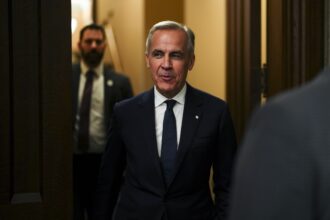The rugged coastline of Newfoundland and Labrador stands at a crossroads as federal and provincial officials clash over the future of offshore natural gas development amid Canada’s evolving climate commitments. This escalating tension highlights the complex balance between resource-driven economic growth and increasingly urgent environmental imperatives.
“What we’re witnessing is a fundamental collision between two visions for Canada’s energy future,” explains Dr. Eleanor Chambers, environmental economist at Memorial University. “Newfoundland’s offshore reserves represent both economic lifeline and climate liability, depending on where you stand.”
The provincial government recently announced plans to fast-track three major offshore gas projects, collectively valued at over $4.2 billion, promising approximately 3,700 jobs in a region historically challenged by economic instability. Premier Andrew Furey has positioned these developments as “transition fuels” that align with Canada’s path toward carbon neutrality while securing the province’s economic foundation.
Federal Environment Minister Steven Guilbeault, however, has expressed significant reservations about expanding fossil fuel infrastructure while Canada struggles to meet its international climate commitments. “The science is unambiguous on this point,” Guilbeault stated during parliamentary discussions last week. “We cannot approve new extraction projects without compromising our 2030 emission reduction targets.”
The controversy extends beyond government chambers into communities across the province. In St. John’s, where the offshore industry has been an economic cornerstone for generations, opinion remains sharply divided. A recent CO24 poll found 58% of provincial residents support continued offshore development, while 42% favor more aggressive climate action, even at the expense of potential job creation.
“This isn’t simply about choosing between jobs and environment,” notes Samantha Brooks, director of the Atlantic Energy Institute. “The more nuanced question involves determining how long natural gas can legitimately serve as a transition fuel before becoming a stranded asset that taxpayers ultimately subsidize.”
Industry analysts point to the Bay du Nord project as particularly emblematic of this dilemma. The deepwater project, which received federal approval last year despite significant environmental opposition, is projected to produce 200,000 barrels of oil equivalent daily when operational. Proponents emphasize its relatively low extraction emissions, while critics question whether any new fossil fuel development remains viable in a decarbonizing global economy.
The provincial government’s economic analysis, released through the Department of Industry, projects $3.9 billion in royalties over the project’s lifetime—critical revenue for a province facing mounting healthcare costs and demographic challenges. Environmental assessments, however, suggest the extracted fuels would ultimately generate approximately 130 million tonnes of carbon emissions when burned.
Meanwhile, indigenous leaders from Labrador have called for more meaningful consultation on resource developments affecting traditional territories. “These decisions have generational consequences for our communities,” stated Elder Joseph Naskapi during recent hearings. “Our perspectives on sustainable development need equal consideration alongside economic forecasts.”
The dispute reflects broader tensions playing out across Canada’s resource economy, where federal climate policies increasingly conflict with provincial resource development strategies. Similar conflicts have emerged in Alberta’s oil sands and British Columbia’s natural gas sector, challenging the cohesiveness of Canada’s climate approach.
International investors are watching closely. Recent analysis from Morgan Stanley indicates growing hesitancy among global capital markets to fund long-term fossil fuel projects, particularly in jurisdictions with evolving regulatory frameworks. This financial uncertainty adds another layer of complexity to Newfoundland’s development calculations.
As federal environmental assessment processes continue for the remaining proposed projects, the fundamental question remains unresolved: can Canada reconcile its resource-based economic model with its climate commitments, or will one inevitably give way to the other? The answer may well determine not just Newfoundland’s economic trajectory, but Canada’s place in the global transition to a low-carbon future.










